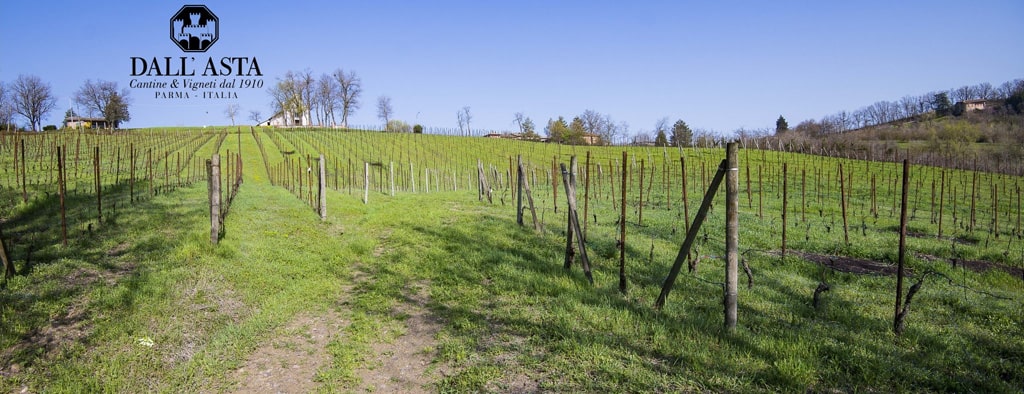
The cellars not only keep the wines, but they are like a book that tells our story: in the oldest part – from the 16th century – the sparkling wine ages while the wine in the barriques evolves with the slow variations of temperatures and seasons; the ancient and spectacular "Plinio" press from the 1600s, master of many harvests, was for us like a winemaking school-ship; it is still visible in the small company museum. The new technological cellar preserves the aromas and integrity of our wines: a true "renewal in the wake of tradition". The ideal exposure of the clayey-limestone soil, the height from 300 to 400 metres, the presence of hedges, woods, meadows, the valley of the Parma torrent, the high mountains behind which overlook the sea, constitute an ideal microclimate for the cultivation of the vine which here has ancient roots: the old name of the castle was in fact "Torchiara". A great wine is already born in the vineyard: for this reason we cultivate our vineyards with ecological sensitivity, we harvest our grapes by hand, to obtain wines that are the maximum expression of the land of Parma.
Let's find out together
The family and history

Let's find out together
The family and history
Cantine Dall'Asta is the oldest winery in the Parma hills, founded in 1910, primarily producing the classic "Lambrusco and Fortana". Having reunited the historic headquarters in Parma with that of the family business, a productive "unique" was set up in Casatico di Torrechiara, an area truly suited for wines, marked by the pursuit of quality. The production has now become very varied and deliberately aimed at enhancing the typical features of the area. Located in a position of rare beauty, Cantine Dall'Asta dominates the Castle of Torrechiara of which it was the main dependency, hence the name "Cortile" = Court, which originates the name of the company: Il Cortile del Castello Soc. Agr. to RL. Born around the nucleus of an ancient watchtower that pre-existed the castle, in addition to the semi-underground cellars of the 16th century intended for the maturation on the lees of Classic Method Sparkling wines, the operational headquarters have been renovated and you can find the technologies of a modern cellar, which is able to carry out the complete cycle of its supply chain internally.

